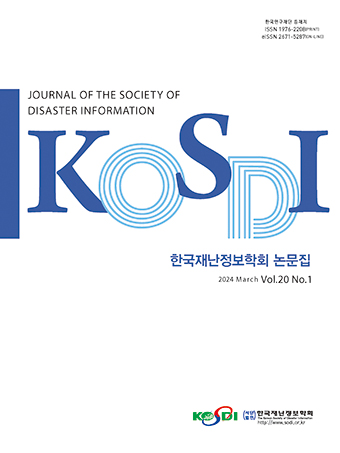Research Article
Abstract
References
Information
Purpose: In this paper, we construct a detailed three-dimensional interface element using a three-dimensional analysis program, and evaluate the composite behavior stability of the connector by applying physical properties such as the characteristics of general members and those of reinforced members Method: The analytical model uses solid elements, including non-linear material behavior, to complete the modeling of beam structures, circular flanges, bolting systems, etc. to the same dimensions as the design drawing, with each member assembled into one composite behavior linkage. In order to more effectively control the uniformity and mesh generation of other element type contact surfaces, the partitioning was performed. Modeled with 50 carbon steel materials. Results: It shows the displacement, deformation, and stress state of each load stage by the contact adjoining part, load loading part, fixed end part, and vulnerable anticipated part by member, and after displacement, deformation, The effect of the stress distribution was verified and the validity of the design was verified. Conclusion: Therefore, if the design support of the micro pile is determined based on this result, it is possible to identify the Vulnerable Parts of the composite behavior connector and the degree of reinforcement.
연구목적: 본 논문에서는 3차원 해석프로그램을 활용하여 인터페이스 요소를 구성하고, 일반적인 부재의 특성치와 강도가 보강된 부재의 특성치 등의 실제 표현할 수 있는 물성조건을 적용하여 연결체의 복합거동 안정성을 평가하고자 하였다. 연구방법: 해석 모델은 비선형적인 재료 거동을 포함한 솔리드 요소(Solid Element)를 사용하여 빔 구조 및 원형 플랜지, 볼팅 시스템 등의 부재를 설계도면과 동일한 치수로 모델링을 완성하였고 각 부재는 하나의 복합거동연결체로 조립되는 과정에서 다른 요소유형(Element Type) 접촉면의 통일성과 매쉬(Mesh) 생성을 보다 효율적으로 제어하여 분할작업(Partition)을 수행하였으며 부재들에 활용된 강재는 Gr. 50 탄소강 재질로 모델링 하였다. 연구결과: 부재별 접촉인접부위, 하중재하부위, 고정단 부위, 취약예상부위 등으로 하여 하중단계별 변위 및 변형, 응력상태 등을 나타내고, 유한요소 해석 후 복합거동연결체의 각 하중단계에서의 변위, 변형, 응력 등의 분포도로 영향을 검증하고 설계의 타당성을 확인하였다. 결론: 따라서 이 결과를 토대로 하여 마이크로 파일의 설계 지지력이 결정되면 복합거동 연결체의 취약 지점의 파악과 보강의 정도를 파악할 수 있을 것으로 판단된다.
- Alberta Energy (2009). Facts about Alberta's oil sands and its industry, http://history.alberta.ca/oilsands
- ABAQUS (2012). 6.12 User's Manuals. Dassault Systemes Simulia Corp., Providence, RI, USA.
- Hong, S.S. (2016). "Geotechnical Properties of Muskeg Soil for Construction Machinery Distributed in Oil-sand Areas." The KSFM Journal of Fluid Machinery, Vol.19, No.3, pp.29-32.10.5293/kfma.2016.19.3.029
- Kim, K.S. (2017). Pile Foundation Connection, Korea. Patent No. 10-1869833
- Soong, T., Dargush, F. (1997). Passive energy dissipation systems in structural engineering. Wiley, New York10.1201/9781439834350.ch27
- Publisher :The Korean Society of Disaster Information
- Publisher(Ko) :한국재난정보학회
- Journal Title :Journal of the Society of Disaster Information
- Journal Title(Ko) :한국재난정보학회논문집
- Volume : 15
- No :4
- Pages :524-530
- DOI :https://doi.org/10.15683/kosdi.2019.12.31.524




 Journal of the Society of Disaster Information
Journal of the Society of Disaster Information







